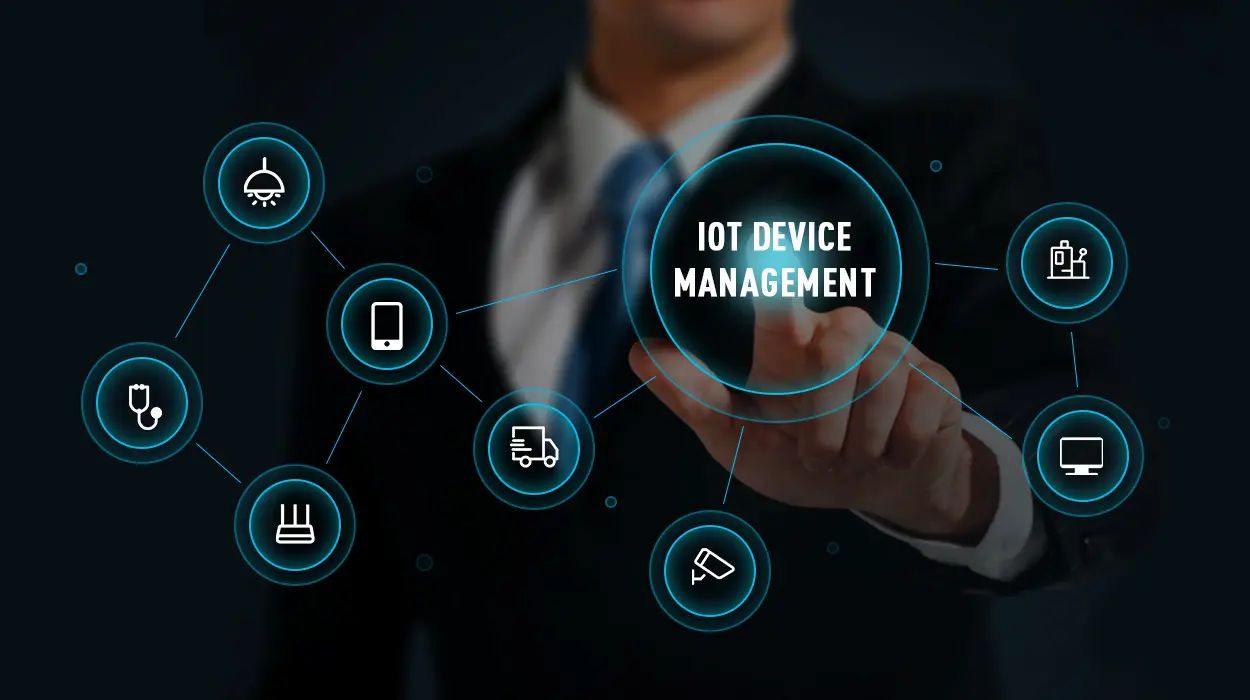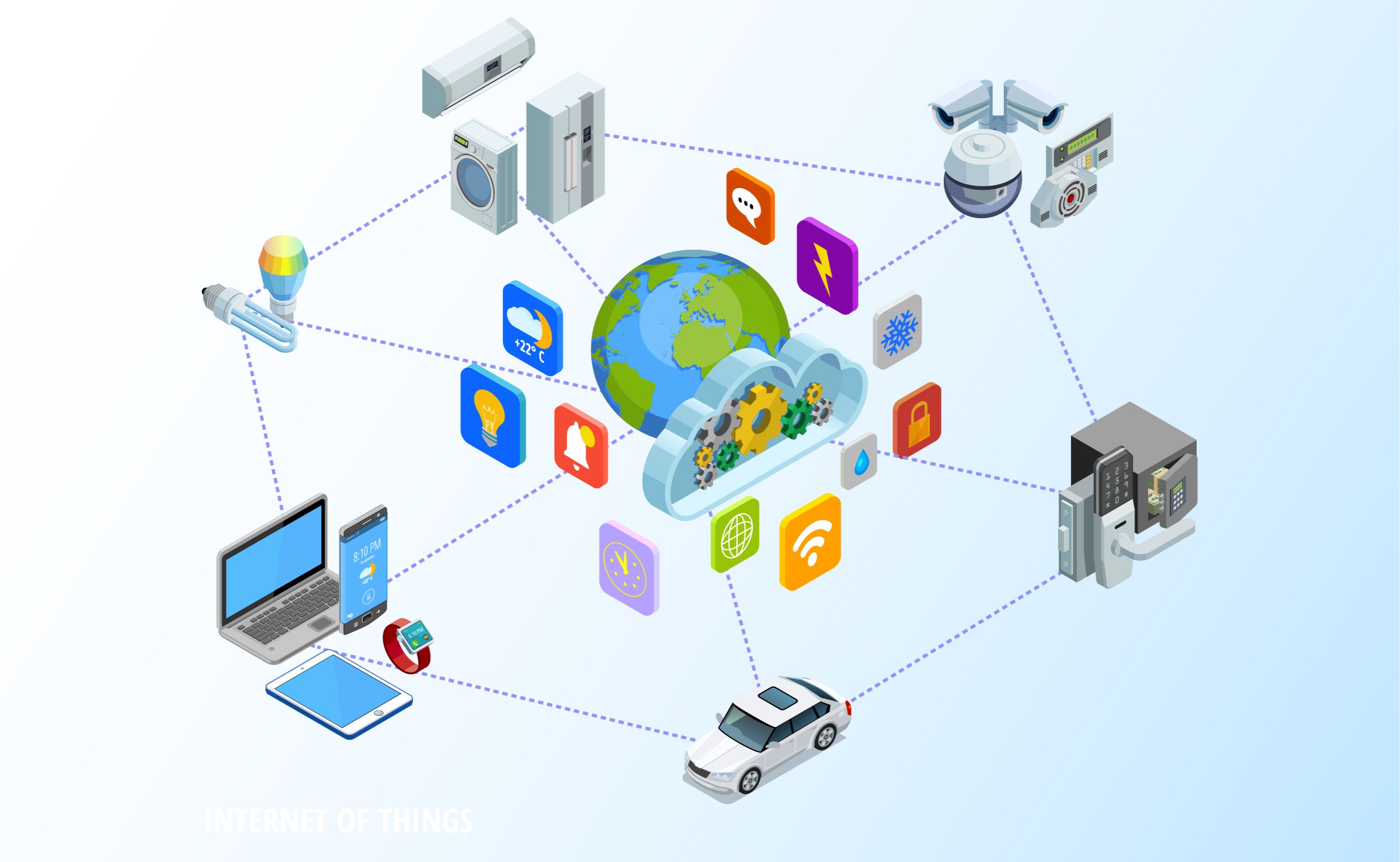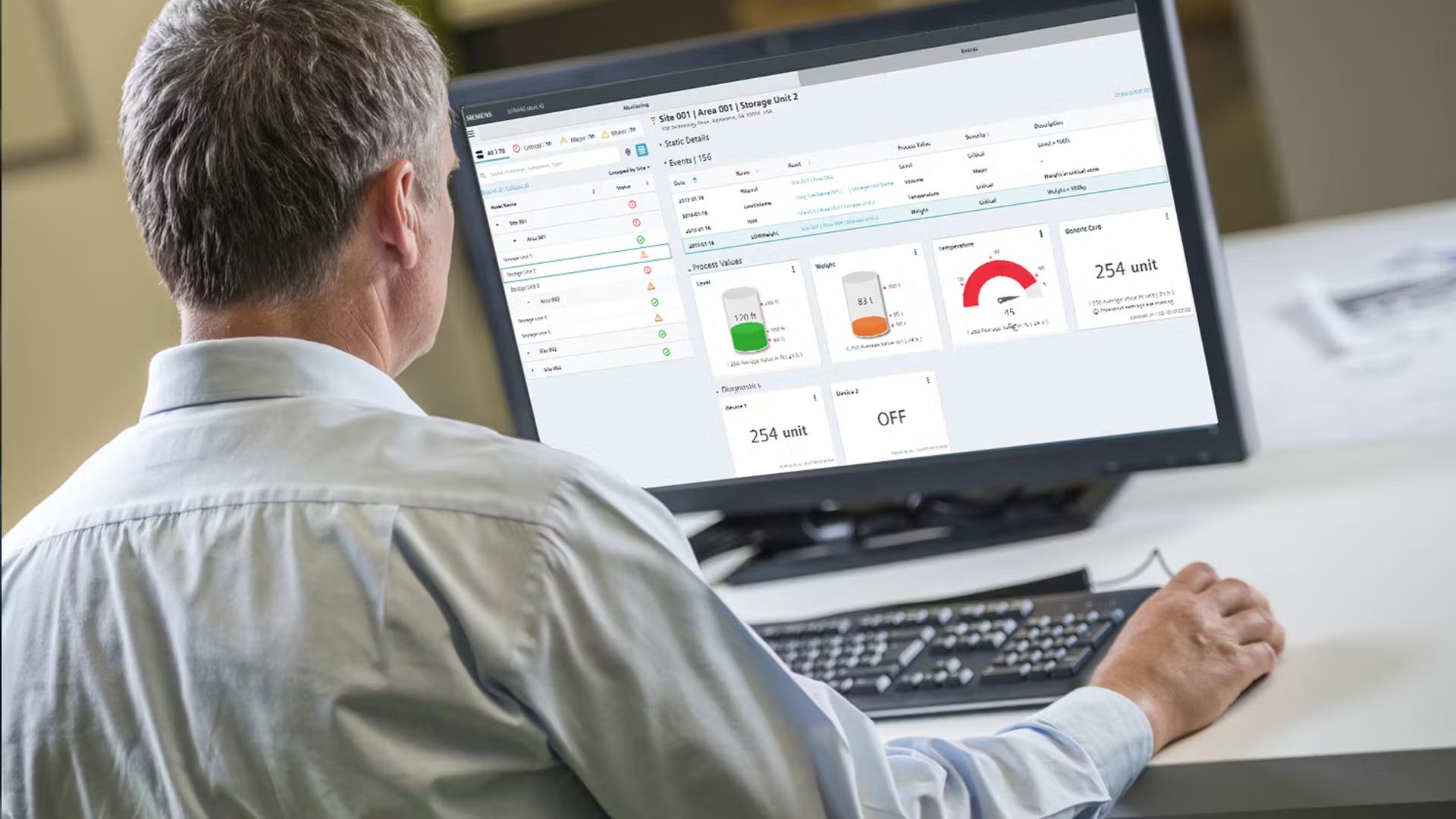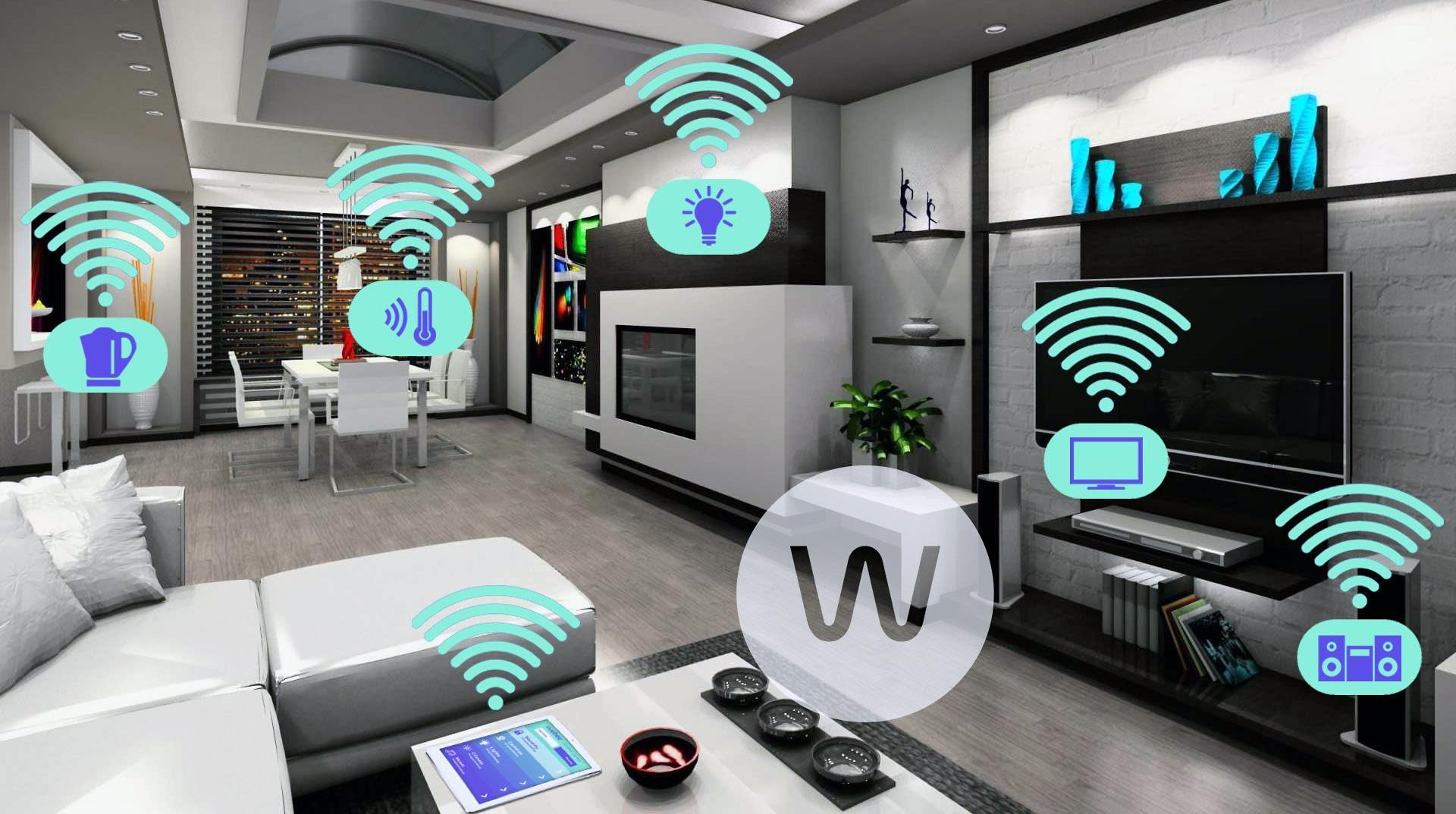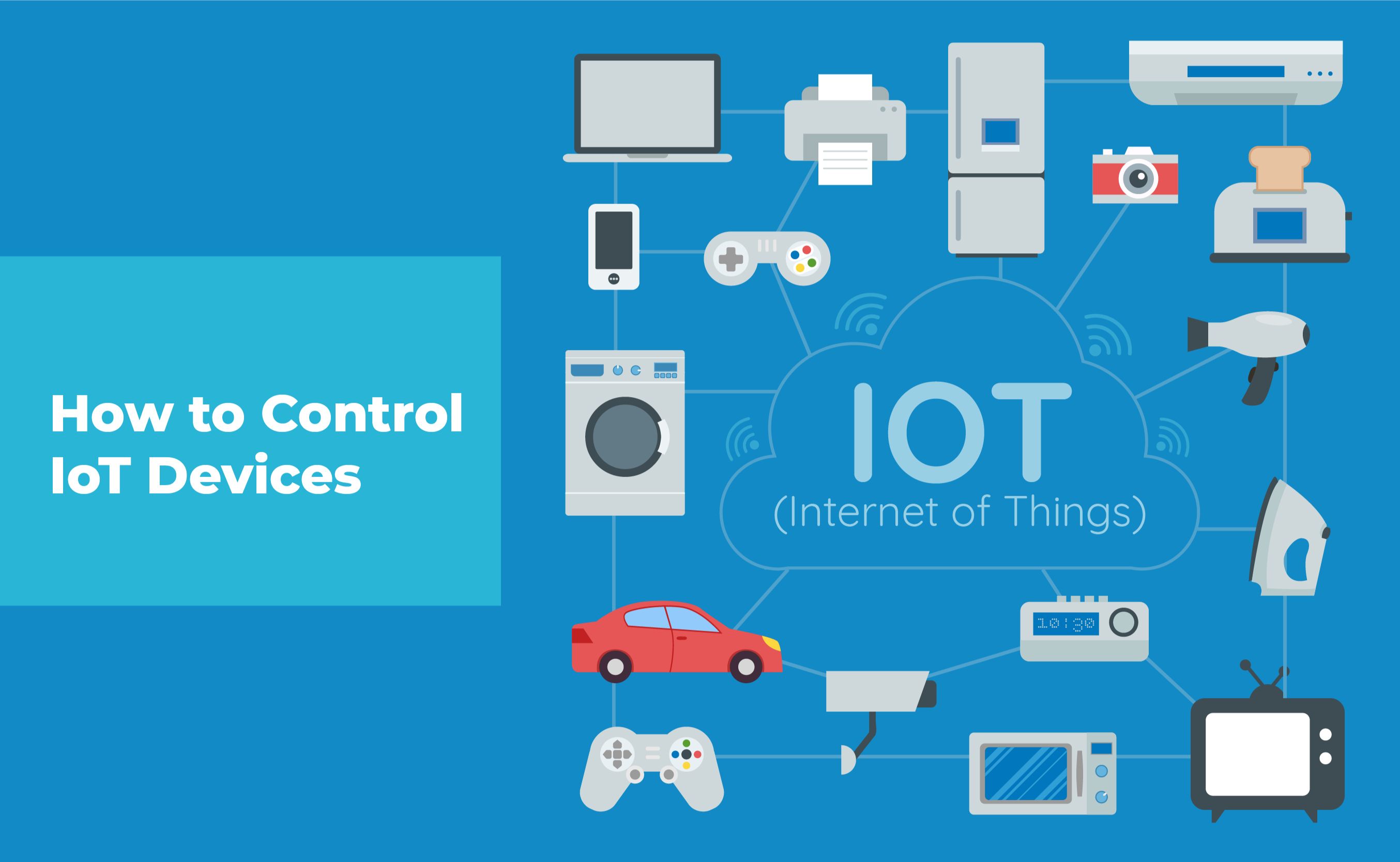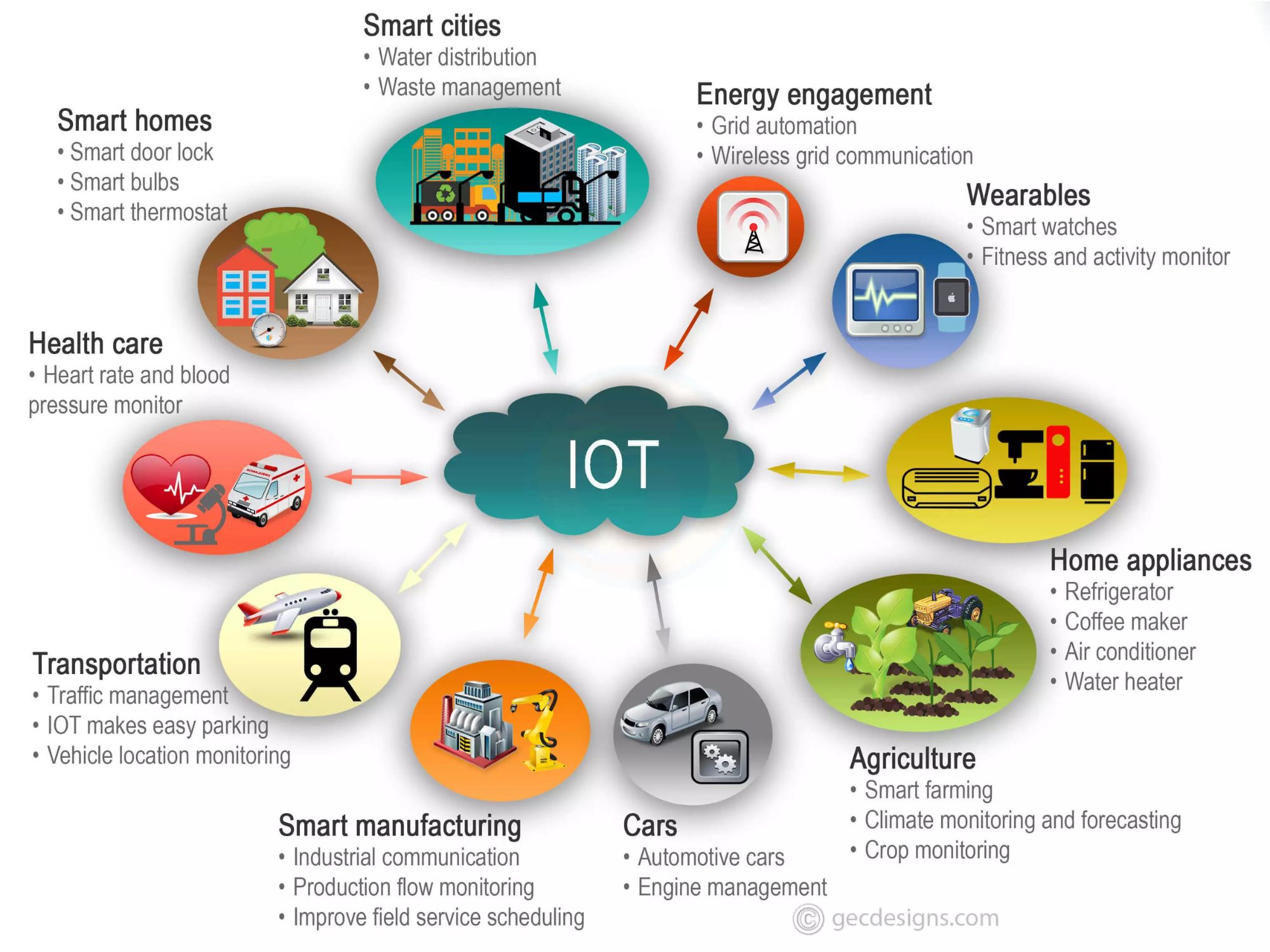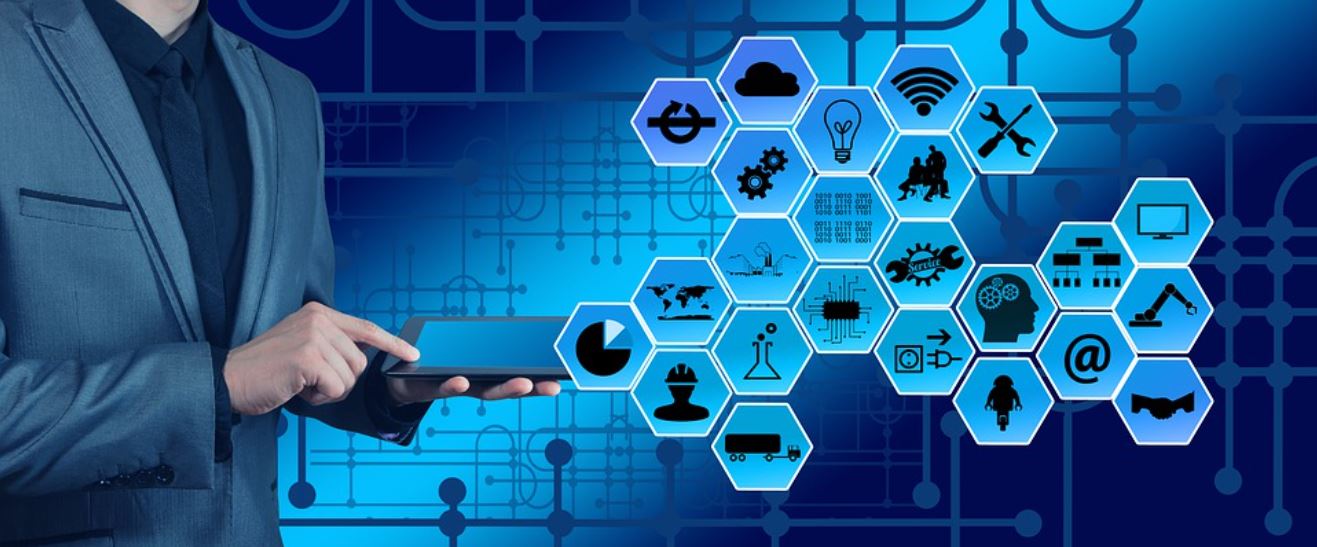Introduction
In today’s interconnected world, the Internet of Things (IoT) continues to revolutionize various industries and sectors. IoT refers to the network of physical devices, vehicles, appliances, and other objects embedded with sensors, software, and connectivity, enabling them to collect and exchange data. This allows for seamless communication and integration between devices, offering tremendous opportunities for automation, monitoring, and control.
One crucial aspect of IoT is the concept of remote functionality. With the ability to remotely access and control devices, the possibilities are endless. Whether it’s adjusting the temperature of your home while you’re away or monitoring industrial machinery across different locations, remote capabilities in IoT offer convenience, efficiency, and increased productivity.
In this article, we will explore the concept of remote in IoT, its definition, and its significance in various industries. We will delve into the numerous use cases of remote in IoT, discussing how it is transforming the way we interact with our surroundings. Additionally, we will highlight the benefits and challenges of utilizing remote functionalities in IoT deployments.
So, let’s dive in and discover the world of remote in IoT, where seamless connectivity and control are at our fingertips.
Definition of IoT
The Internet of Things (IoT) refers to the network of physical devices, vehicles, appliances, and other objects embedded with sensors, software, and connectivity that enable them to collect and exchange data. These connected devices communicate with each other and transmit data over the internet, ultimately making our world more interconnected and intelligent.
At its core, IoT enables the seamless integration of the digital and physical worlds. Devices equipped with sensors and data collection capabilities can transfer data to other devices or cloud-based platforms, where it is processed, analyzed, and utilized to provide valuable insights and enable smart automation and decision-making.
The key elements that define IoT are:
- Devices: IoT devices can range from everyday objects, such as thermostats and light bulbs, to complex industrial machinery and automobiles.
- Sensors and Actuators: Sensors collect data from the surroundings, such as temperature, motion, light, or sound, while actuators enable devices to perform actions based on received data.
- Connectivity: IoT devices are connected to the internet and other devices, allowing for seamless data transmission and communication.
- Data: IoT devices generate large amounts of data, which can be analyzed to extract insights and drive informed decision-making.
- Cloud Computing: Data collected by IoT devices is often stored and processed in cloud-based platforms, enabling scalability, accessibility, and advanced data analytics.
The applications of IoT are vast and diverse, ranging from smart homes and cities to healthcare, agriculture, transportation, and industrial automation. By connecting devices and enabling them to gather and share data, IoT presents endless opportunities for innovation and efficiency.
With a growing number of devices and increasing connectivity, IoT is rapidly transforming the way we live and work. It has the potential to create smarter, more sustainable environments and revolutionize industries by improving processes, enhancing productivity, and enhancing the overall quality of life.
Definition of Remote
The term “remote” refers to the ability to access or control something from a distance. It implies the capability to interact with a device, system, or process without physical proximity. In the context of technology and IoT, remote refers to the ability to monitor, manage, and control devices, applications, and systems from a remote location using various means of communication.
Remote functionality in IoT allows users to connect to and interact with devices and systems from anywhere in the world. It enables seamless control and access to connected devices, even when physically separated from them. With remote capabilities, users can perform tasks and obtain real-time information without being physically present at the location of the device or system they are interacting with.
Remote functionality in IoT is made possible through the use of networks, such as the internet or cellular networks, which facilitate communication between devices. It often involves the integration of sensors, actuators, and connectivity modules within devices to enable remote monitoring, control, and data exchange.
Remote capabilities can take various forms, depending on the specific application and requirements. It can include functionalities such as:
- Remote Control: The ability to control and operate devices or systems remotely. For example, adjusting the temperature of a smart thermostat or remotely locking and unlocking doors.
- Remote Monitoring: The ability to remotely monitor and receive real-time data from devices or systems. This can include tracking performance metrics, environmental conditions, or security surveillance.
- Remote Access: The ability to remotely access and interact with applications or systems from a different location. This can include accessing files, databases, or software interfaces remotely.
- Remote Maintenance: The ability to perform troubleshooting, diagnostics, or maintenance activities on devices or systems remotely, reducing the need for physical intervention.
- Remote Updates: The ability to remotely update software or firmware on devices or systems, ensuring they stay up-to-date with the latest features and security patches.
Remote functionality in IoT has opened up new possibilities for automation, convenience, and efficiency. It allows for remote access and control of devices and systems, providing users with flexibility, accessibility, and increased productivity.
Whether it’s monitoring and controlling smart home devices, managing industrial processes from afar, or remotely accessing critical information, the concept of remote in IoT has become integral to our daily lives and various industries.
Explanation of Remote in IoT
In the context of the Internet of Things (IoT), remote functionality plays a vital role in enabling seamless connectivity and control of devices and systems from a distance. It allows users to remotely access, monitor, and manage IoT devices, applications, and processes, providing convenience, efficiency, and enhanced functionality.
Remote capabilities in IoT are made possible through the integration of networking technologies and communication protocols. By connecting IoT devices to the internet or other networks, users can interact with them remotely using various means, such as smartphones, tablets, or computers.
One of the primary applications of remote functionality in IoT is remote control. This allows users to operate and adjust settings of IoT devices, even if they are located in a different physical location. For instance, you can remotely control the temperature of your smart thermostat or turn on/off your smart lights from your smartphone, even when you are away from home.
Remote monitoring is another key aspect of remote functionality in IoT. With remote monitoring, users can receive real-time data and notifications from IoT devices, enabling them to stay informed about the status, performance, and conditions of various systems. For example, in home security systems, users can remotely monitor video feeds and receive alerts about any suspicious activities.
Remote functionality in IoT also facilitates remote access to applications and systems. This enables users to remotely access files, databases, or software platforms. For instance, remote access allows employees to work from home or access critical business applications while traveling.
Furthermore, remote maintenance is an essential use case of remote functionality in IoT. It eliminates the need for physical intervention and enables technicians to perform diagnostics, troubleshooting, and maintenance activities on devices and systems from a distance. This improves efficiency, reduces costs, and minimizes downtime.
Remote updates are also a critical aspect of remote functionality in IoT. Devices connected to the internet can receive software or firmware updates remotely, ensuring they stay up-to-date with the latest features, bug fixes, and security patches. This simplifies the update process and ensures devices are operating optimally.
Overall, the concept of remote in IoT empowers users to connect with and control IoT devices, applications, and systems regardless of their physical location. It enhances convenience, efficiency, and productivity by enabling remote access, monitoring, control, maintenance, and updates. As IoT continues to expand, remote functionality will become increasingly important, revolutionizing the way we interact with our environment and improving various aspects of our lives and industries.
Use Cases of Remote in IoT
The concept of remote functionality in IoT has brought forth a wide range of use cases, revolutionizing industries and transforming the way we interact with our surroundings. Here are some prominent use cases of remote in IoT:
1. Smart Home Automation: Remote functionality enables users to control and manage various smart devices in their homes from anywhere. Whether it’s adjusting the thermostat, turning on the lights, or checking security cameras, remote control and monitoring make homes more convenient, energy-efficient, and secure.
2. Industrial IoT: In the industrial sector, remote functionality in IoT allows for remote monitoring and control of machinery and processes. This enables companies to optimize production, reduce downtime, and enhance operational efficiency by accessing real-time data and making informed decisions from remote locations.
3. Healthcare: Remote functionality in IoT offers significant advancements in healthcare. It enables remote patient monitoring, allowing healthcare providers to monitor patient vital signs, medication adherence, and overall health conditions. This leads to improved patient care, reduced hospital visits, and better management of chronic diseases.
4. Energy Management: IoT and remote functionality enable users to remotely control and monitor energy usage in buildings. With smart meters and connected devices, users can optimize energy consumption, monitor usage patterns, and make adjustments remotely to reduce costs and promote sustainability.
5. Fleet Management: Remote tracking and management of vehicles in fleet operations improve efficiency and safety. Real-time monitoring of vehicle locations, fuel consumption, and maintenance needs enables businesses to optimize routes, reduce fuel costs, and enhance driver safety.
6. Agricultural Monitoring: Remote sensors and IoT devices enable farmers to monitor and control various aspects of agriculture, such as soil moisture, temperature, and crop health. This allows for efficient irrigation, optimized resource allocation, and early detection of diseases or pests.
7. Security Systems: Remote access and monitoring of security systems, including cameras, alarms, and access control, provide enhanced security and peace of mind. Users can remotely view surveillance footage, receive alerts, and control security features to protect their homes or businesses.
8. Asset Tracking: Remote functionality in IoT allows businesses to track assets, such as equipment, inventory, or vehicles, in real-time. This improves asset visibility, prevents theft or loss, and enhances inventory management and logistics operations.
9. Smart Cities: Remote functionality in IoT contributes to the development of smart cities, enabling efficient management of resources and services. Remote control of street lighting, waste management systems, or traffic signals enhances energy efficiency, minimizes waste, and improves transportation infrastructure.
10. Remote Education: With the remote capabilities of IoT, education can be delivered beyond traditional classrooms. Remote access to educational content, virtual classrooms, and remote monitoring of student progress enable distance learning and personalized education experiences.
These use cases highlight the broad impact of remote functionality in IoT across various sectors. From home automation to industrial processes and healthcare, remote capabilities have the potential to enhance efficiency, increase productivity, and improve the overall quality of life.
Benefits of Remote in IoT
The incorporation of remote functionality in IoT brings forth numerous benefits, transforming the way we interact with technology and improving various aspects of our lives. Here are some key benefits of remote in IoT:
1. Convenience and Flexibility: Remote functionality allows users to control and monitor devices and systems from anywhere at any time. This provides convenience and flexibility, enabling users to adjust settings, access information, and perform tasks without being physically present. Whether it’s managing home appliances or monitoring industrial processes, remote capabilities offer unparalleled convenience.
2. Increased Efficiency and Productivity: Remote access and control of devices in IoT enhance efficiency and productivity. For example, in industrial settings, remote monitoring and control reduce the need for manual intervention and enable real-time decision-making. This leads to improved operational efficiency, reduced downtime, and enhanced productivity.
3. Cost Savings: Remote functionality in IoT can lead to cost savings in various ways. By remotely monitoring energy usage, businesses and homeowners can optimize resource consumption and reduce energy bills. Remote maintenance and diagnostics minimize the need for on-site visits, cutting down maintenance costs. Additionally, remote control allows for efficient asset utilization and fleet management, reducing operational expenses.
4. Improved Safety and Security: Remote monitoring and control enhance safety and security in various applications. For instance, in smart homes, users can remotely monitor security cameras, receive alerts, and control locks, ensuring the safety of their homes and loved ones. In industrial settings, remote monitoring prevents accidents and enables timely intervention in case of any hazardous situations.
5. Enhanced Decision-Making: With remote access to real-time data and analytics, decision-making becomes data-driven and more accurate. Users can analyze the performance metrics, monitor trends, and make informed decisions without being physically present at the location. This improves strategic planning, resource allocation, and operational efficiency.
6. Accessibility for All: Remote functionality in IoT promotes accessibility for all individuals, including those with physical limitations or disabilities. With remote control, individuals can operate and interact with devices and systems that might otherwise be challenging or inaccessible. This promotes inclusivity and independence.
7. Scalability and Flexibility: Remote functionality allows for the easy scalability and flexibility of IoT deployments. It enables the addition or removal of devices and systems without significant changes to the physical infrastructure. This flexibility facilitates the adaptation of IoT solutions to evolving requirements and emerging technologies.
8. Remote Updates and Maintenance: IoT devices connected remotely can receive software or firmware updates easily. This ensures that the devices have access to the latest features, improvements, and security patches without requiring physical intervention. Remote maintenance and diagnostics also minimize downtime and improve device reliability.
9. Personalization and Customization: Remote functionality enables personalized experiences and customization of settings based on individual preferences. Users can remotely adjust device settings, access personalized content, and interact with IoT solutions tailored to their specific needs. This enhances user satisfaction and engagement.
10. Environmental Impact: Remote functionality contributes to environmental sustainability by enabling efficient resource utilization. Remote control of energy usage, smart waste management systems, and optimized transportation through remote fleet management reduce carbon footprint and promote green practices.
The benefits of remote functionality in IoT are far-reaching, positively impacting various aspects of our lives, from convenience and efficiency to safety and sustainability. With seamless connectivity and control at our fingertips, the possibilities continue to expand, enhancing the way we interact with technology and shaping a more connected future.
Challenges of Remote in IoT
While remote functionality in IoT brings tremendous benefits, there are several challenges that need to be addressed. These challenges include:
1. Security Risks: With remote access and control comes the concern of security risks. The increased connectivity and remote connections can make IoT devices vulnerable to cyberattacks and unauthorized access. Implementing robust security measures and encryption protocols is vital to mitigate these risks and safeguard sensitive data.
2. Connectivity Issues: Reliable and uninterrupted connectivity is crucial for remote functionality in IoT. However, connectivity issues, such as network outages or unreliable internet connections, can disrupt the remote interaction with IoT devices. Ensuring a stable and resilient network infrastructure is necessary for maintaining consistent remote control and monitoring.
3. Compatibility and Interoperability: In IoT ecosystems, devices and systems from different manufacturers may need to work together seamlessly. However, the lack of standardized protocols and compatibility issues can hinder interoperability. Establishing industry-wide standards and protocols can help address this challenge and ensure smooth integration and remote interaction between different IoT devices and platforms.
4. Complexity and Management: As IoT deployments grow, managing and maintaining a large number of remotely connected devices can become complex. Issues such as configuring devices, managing updates, and troubleshooting can become challenging. Implementing centralized management systems that can handle remote device management efficiently is essential to minimize complexity and streamline operations.
5. Privacy Concerns: Remote functionality in IoT raises privacy concerns regarding the collection, storage, and use of personal data. Users may be wary of sharing sensitive information or having their activities monitored remotely. Implementing transparent privacy policies, consent management, and data anonymization techniques are crucial to address these concerns and ensure user privacy.
6. Power Consumption: Remote functionality in IoT requires constant connectivity and communication, which can be energy-intensive for devices. The continuous connection and data transmission can drain device batteries quickly, requiring frequent recharging or replacement. Implementing power-efficient designs and optimizing communication protocols can help mitigate power consumption challenges.
7. User Experience: Remote control and monitoring should provide a seamless and user-friendly experience. However, interface complexity and usability issues can hinder the adoption and effectiveness of remote functionality. Designing intuitive interfaces and providing clear instructions can enhance user experience and ensure easy navigation and interaction.
8. Regulatory and Legal Compliance: With remote functionality in IoT, compliance with regulatory requirements and privacy laws becomes critical. Different jurisdictions may have specific regulations regarding data privacy, security, and remote access. Adhering to these regulations and ensuring compliance can be challenging, especially in multinational deployments.
9. Cultural and Organizational Change: Adopting remote functionality in IoT often requires cultural and organizational change. Companies may need to restructure workflows, train employees, and embrace new technologies and processes. Overcoming resistance to change and fostering a culture of innovation and adaptability are essential to successfully implement remote functionalities in IoT.
10. Cost and Return on Investment (ROI): Implementing remote functionalities in IoT may require upfront costs for infrastructure, device upgrades, and staff training. Assessing the ROI and long-term benefits of remote control and monitoring capabilities is crucial to justify the investments and ensure value generation.
Addressing these challenges will be crucial for unleashing the full potential of remote functionalities in IoT. By overcoming these obstacles, businesses and individuals can fully leverage the benefits of seamless connectivity and control, enhancing efficiency, productivity, and the overall IoT experience.
Conclusion
The concept of remote functionality in the Internet of Things (IoT) has revolutionized the way we interact with our devices and systems. With the ability to remotely access, control, and monitor IoT devices from anywhere in the world, remote functionalities have unlocked numerous opportunities for convenience, efficiency, and enhanced productivity.
From smart homes to industrial processes, the use of remote in IoT has enabled seamless connectivity, providing users with the flexibility to adjust settings, obtain real-time data, and perform tasks without physical proximity to the devices. The benefits of remote in IoT are far-reaching, offering convenience, increased efficiency, cost savings, improved safety and security, and enhanced decision-making capabilities.
However, remote functionalities in IoT also present challenges that need to be addressed. Security risks, connectivity issues, interoperability challenges, and privacy concerns are among the factors that must be carefully managed. Organizations and individuals need to prioritize robust security measures, ensure reliable and stable connectivity, and address compatibility and privacy considerations.
Overcoming these challenges requires the development of industry standards, innovative solutions, and ongoing collaboration between stakeholders. It is crucial to prioritize user experience, power consumption optimization, regulatory compliance, and the cultural and organizational changes necessary to fully embrace remote functionalities in IoT deployments.
As IoT continues to evolve, remote functionality will play an increasingly vital role in shaping a more connected and intelligent world. The ability to remotely access, control, and monitor devices will further enhance our daily lives, transform industries, and create new opportunities for innovation and efficiency.
By harnessing the power of remote in IoT and addressing the associated challenges, we can unlock the full potential of this technology, creating a future where seamless connectivity and control become the norm. With proper implementation and management, remote functionalities in IoT will enable us to live in smarter, more efficient, and interconnected environments.







